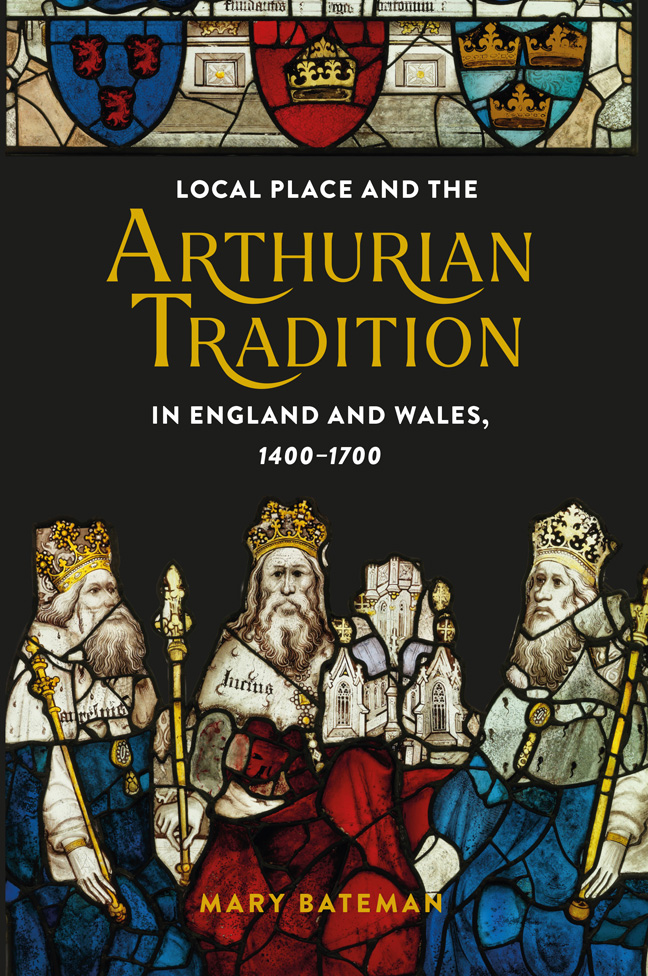Book contents
- Frontmatter
- Contents
- List of Illustrations
- Acknowledgements
- Introduction: Place and the defence of Arthur
- 1 ‘Thise were his places and his habitacions’: Arthur in situ in the fifteenth century
- 2 Contentious places: Reconciling Arthurian places in the fifteenth century
- 3 The best of the west: John Leland's West Country Arthur
- 4 Locating Arthur in England and Wales: John Leland, John Prise, and Elis Gruffydd
- 5 Placing Arthur in William Camden's Britannia
- Coda: Arthur's local renaissance?
- Bibliography
- Index
- Miscellaneous Endmatter
3 - The best of the west: John Leland's West Country Arthur
Published online by Cambridge University Press: 21 February 2024
- Frontmatter
- Contents
- List of Illustrations
- Acknowledgements
- Introduction: Place and the defence of Arthur
- 1 ‘Thise were his places and his habitacions’: Arthur in situ in the fifteenth century
- 2 Contentious places: Reconciling Arthurian places in the fifteenth century
- 3 The best of the west: John Leland's West Country Arthur
- 4 Locating Arthur in England and Wales: John Leland, John Prise, and Elis Gruffydd
- 5 Placing Arthur in William Camden's Britannia
- Coda: Arthur's local renaissance?
- Bibliography
- Index
- Miscellaneous Endmatter
Summary
Although many factors could contribute to the Arthurianisation of specific places – from local pride to ancient earthworks to scribal misreading – one factor in particular encouraged the gradual emergence of Arthurian regions; that is, a gathering of several Arthurian localities. We might consider this factor in terms of the ‘contagious’ sacred geographies proposed by Laura Varnam, or else as a kind of logic of geographical association. Often, this logic involved reasoning on the basis of a location's proximity to existing Arthurian places presumed to be genuine. Assuming Geoffrey's Historia to be reliable, how far would Arthur realistically have travelled in pursuit of Mordred from Winchester to Camlan? And might it make more sense for Gawain to buried in Dover, where he died, rather than Rhos in Wales? Arthurian settings could be more readily mapped over real-world places that were close to established Arthurian locations. One example is Pomparles bridge between Street and Glastonbury, located within walking distance of Arthur's alleged grave at Glastonbury Abbey. It is recorded by its romance name, the ‘Poynt Perilous’ (that is, the perilous bridge) in the Middle English romance Lybeaus Desconus (c. 1375–1400). The author of Lybeaus Desconus translates the geographies of their French romance source, moving Arthur's court from Caerleon to Glastonbury, and the nearby ‘gue perilleus’ (perilous ford) to the ‘poynt perillous’. Pomparles bridge is also recorded as ‘pons periculosus’ in a local charter of 1344 and a 1415 hundred court roll. Later in the sixteenth century, the antiquarian and poet John Leland (c. 1503–52), the subject of this chapter, visited the Glastonbury area, and in his notes he recorded passing by ‘Pontperlus, wher men fable that Arture caste in his swerd’. Perhaps because of its dubious romance associations, the bridge did not make it into Leland's later published Arthurian text, a defence of Arthur's existence titled the Assertio inclytissimi regis Arthurii regis Britanniae [An assertion of the most famous Arthur, King of Britain] (1544). Yet other geographically logical sites put forward by Leland, such as Cadbury Castle, would go on to be fully incorporated into Arthur's geography even to the present day. These presumptive geographies were vital to the emergence of an Arthurian West Country region by the midsixteenth century, accruing incrementally around the one Arthurian site which remained largely uncontested: Glastonbury.
Yet not even Glastonbury, with its impressive material remains, would remain entirely uncontested for long.
- Type
- Chapter
- Information
- Publisher: Boydell & BrewerPrint publication year: 2023

